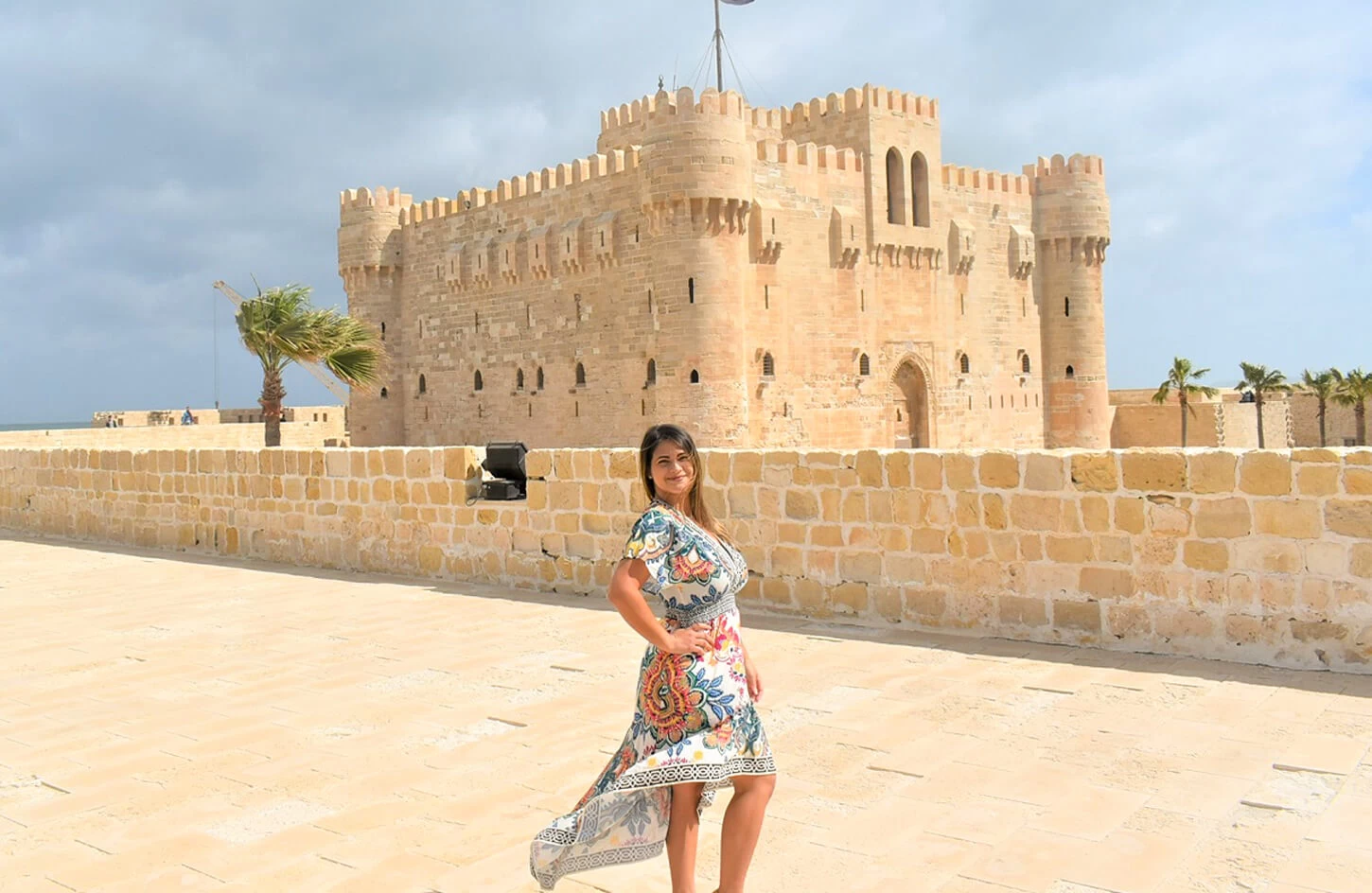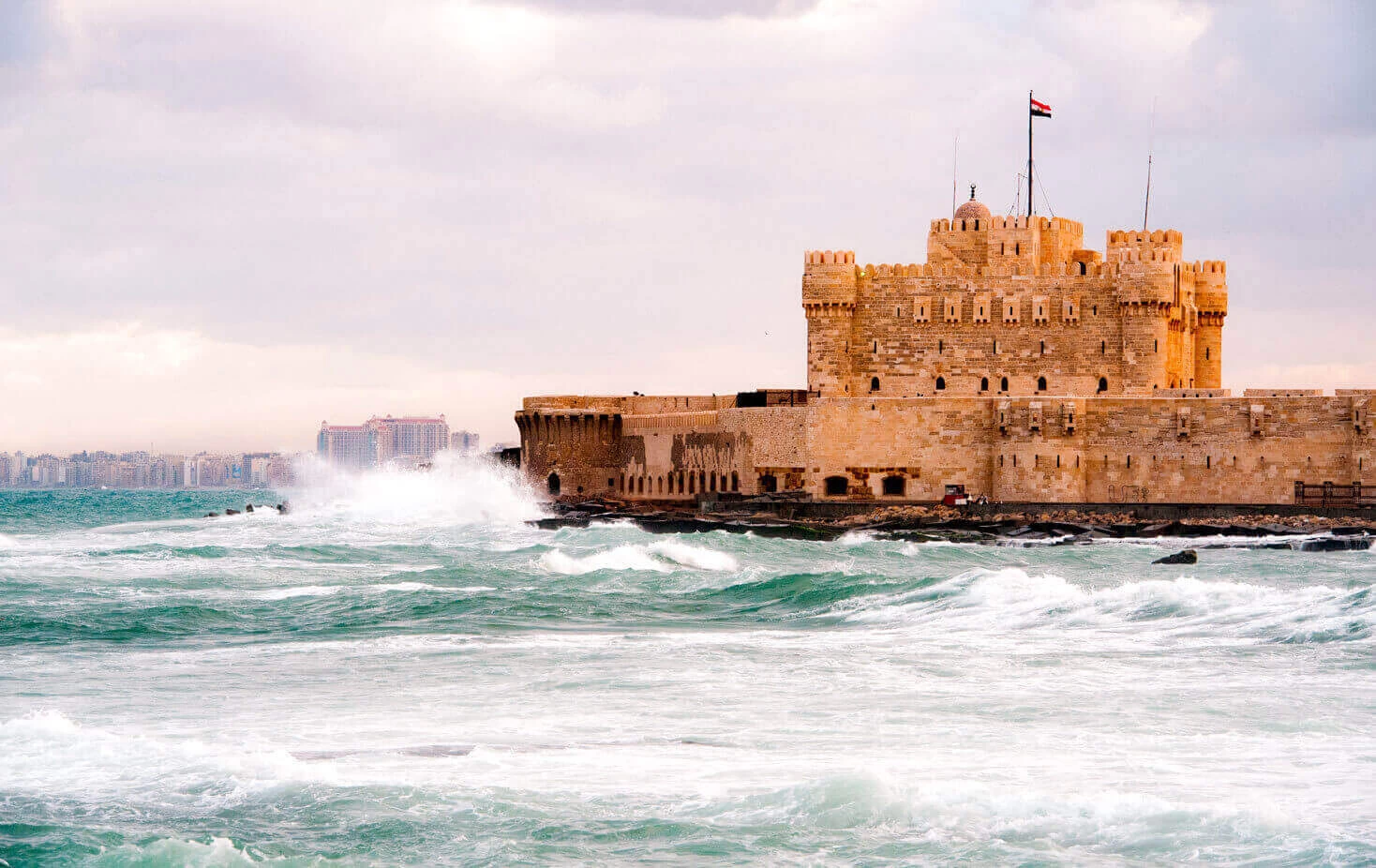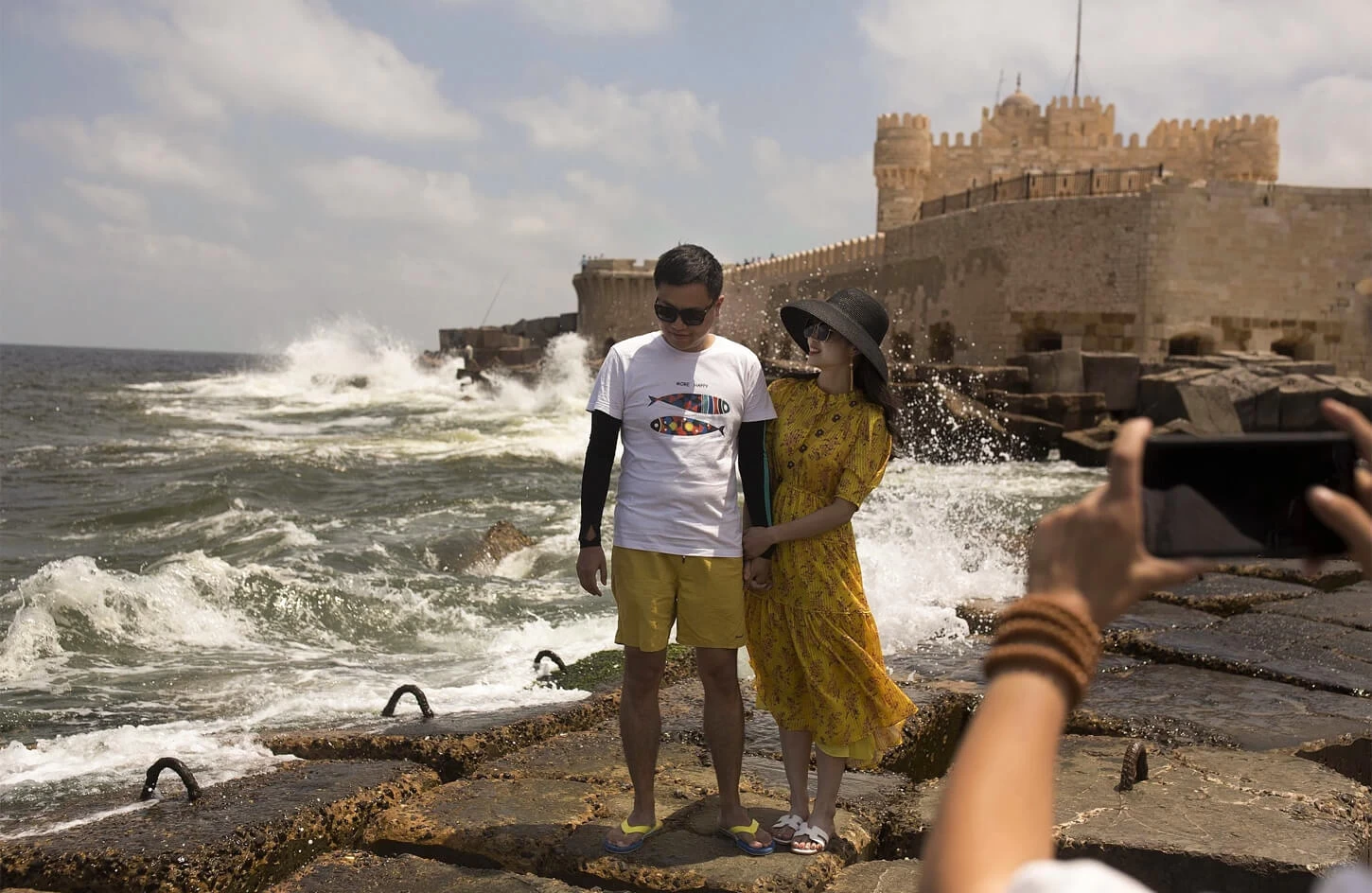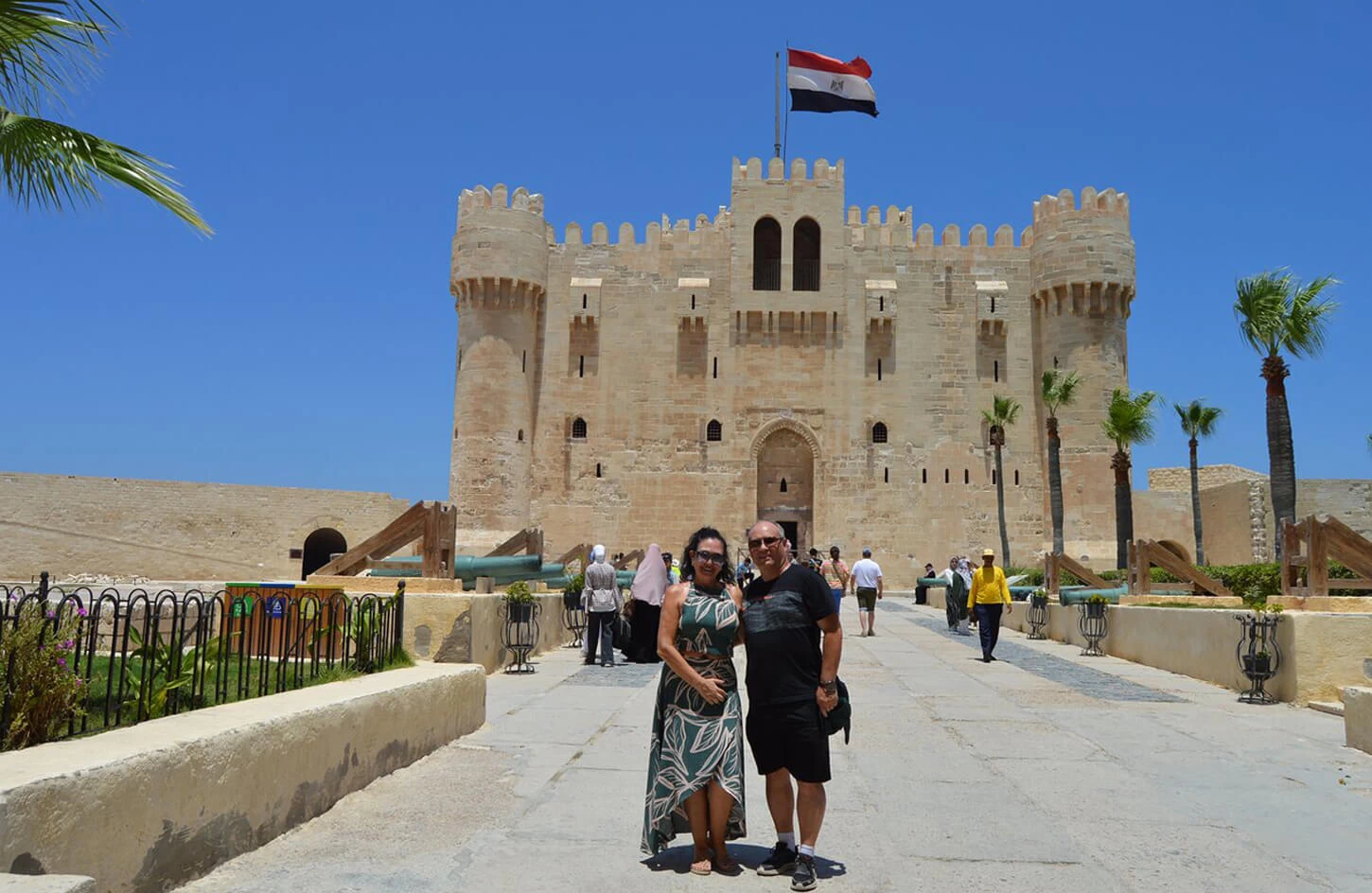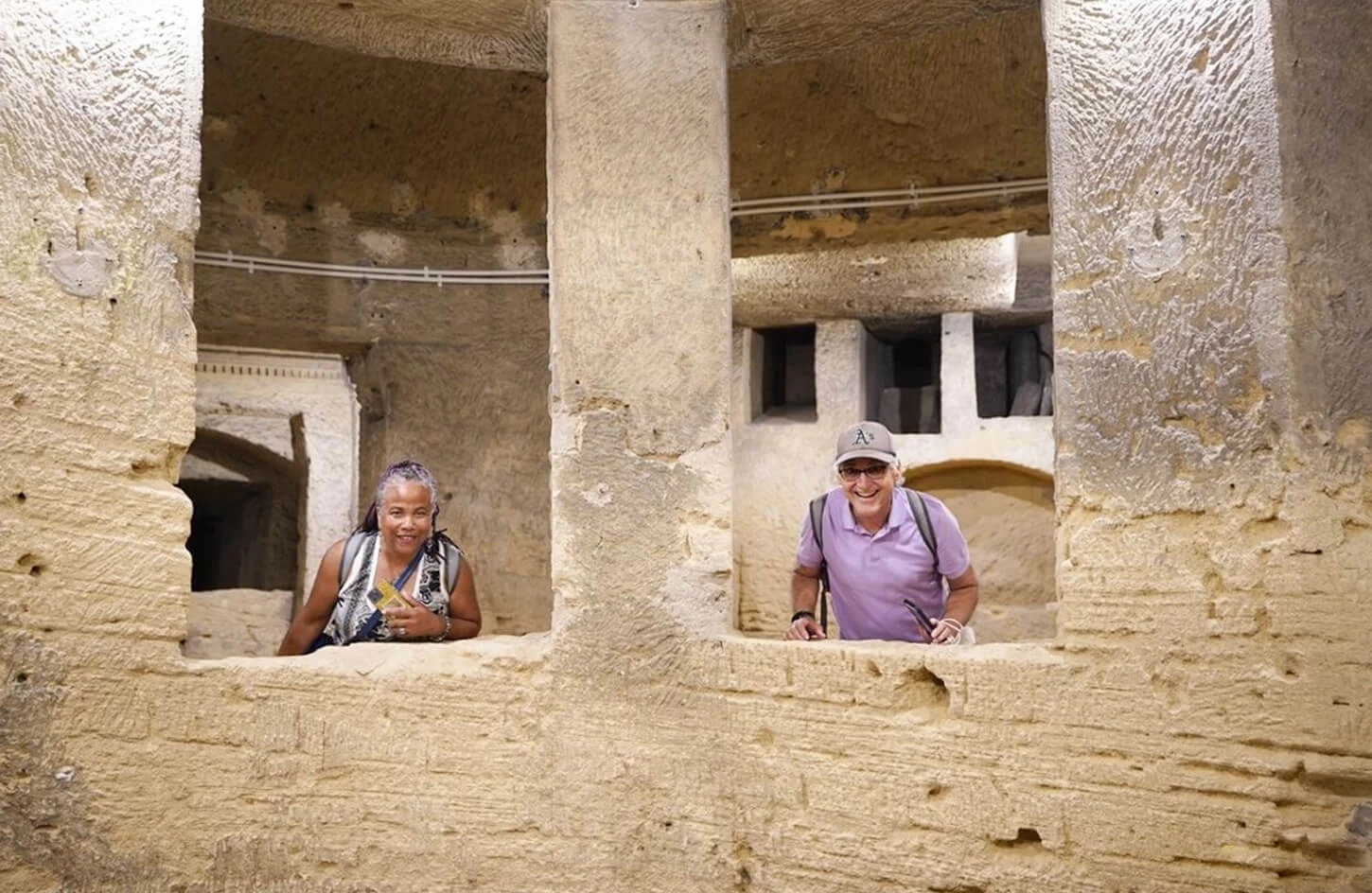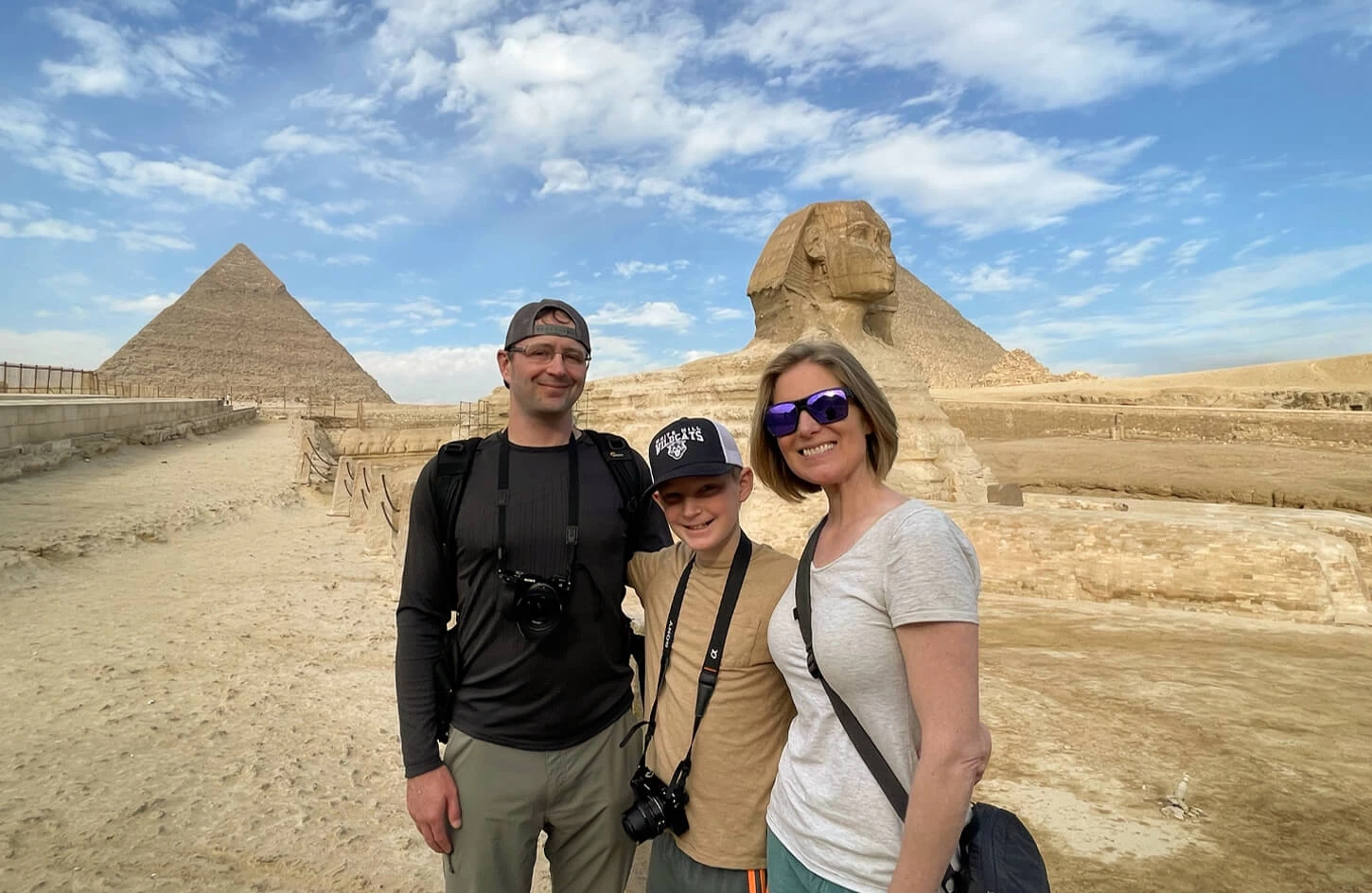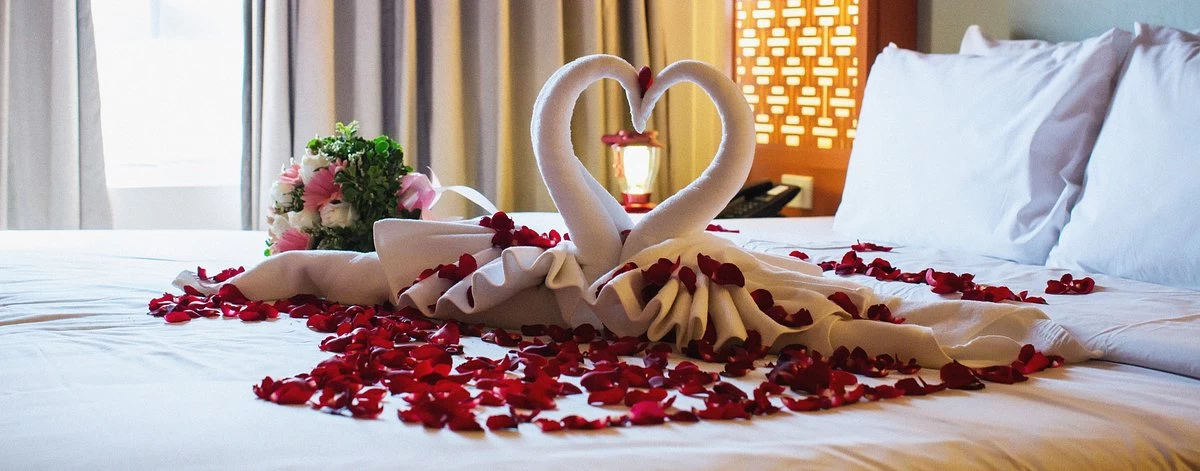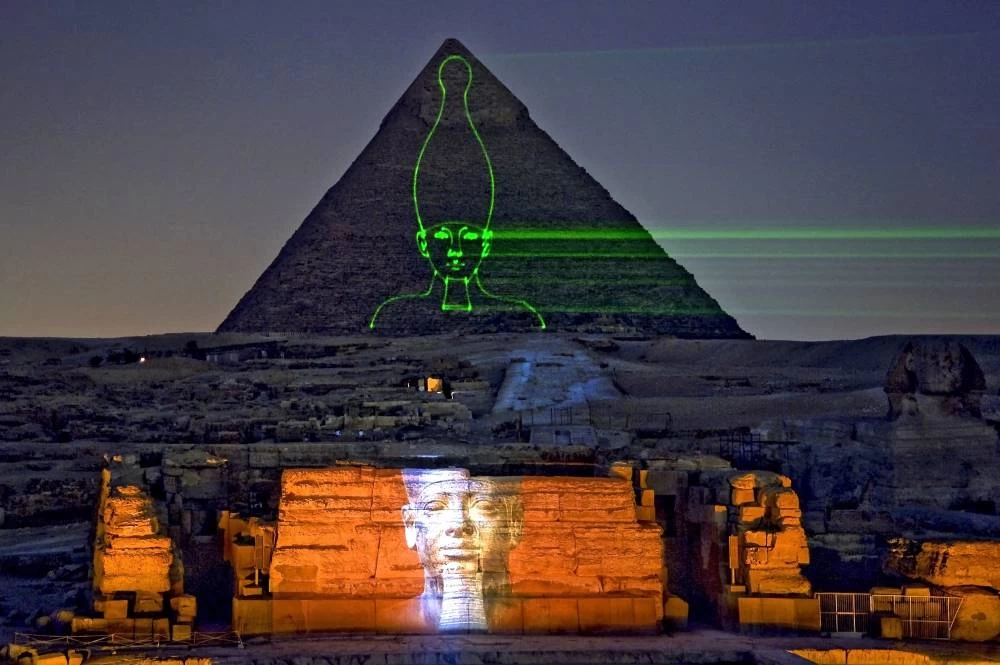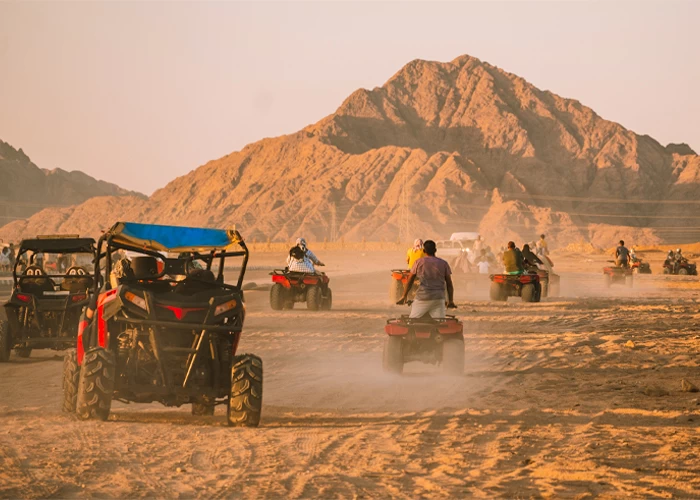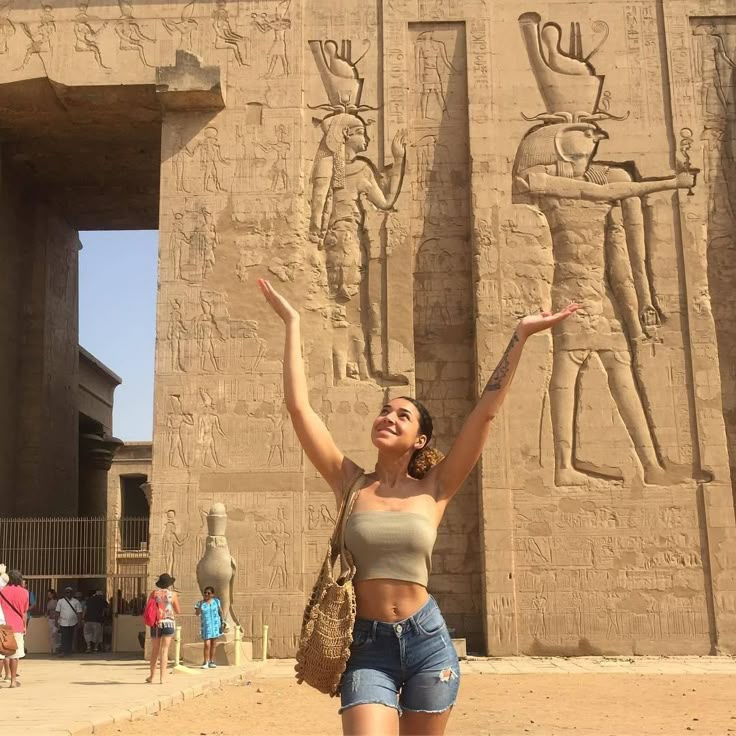Kom el Shoqafa
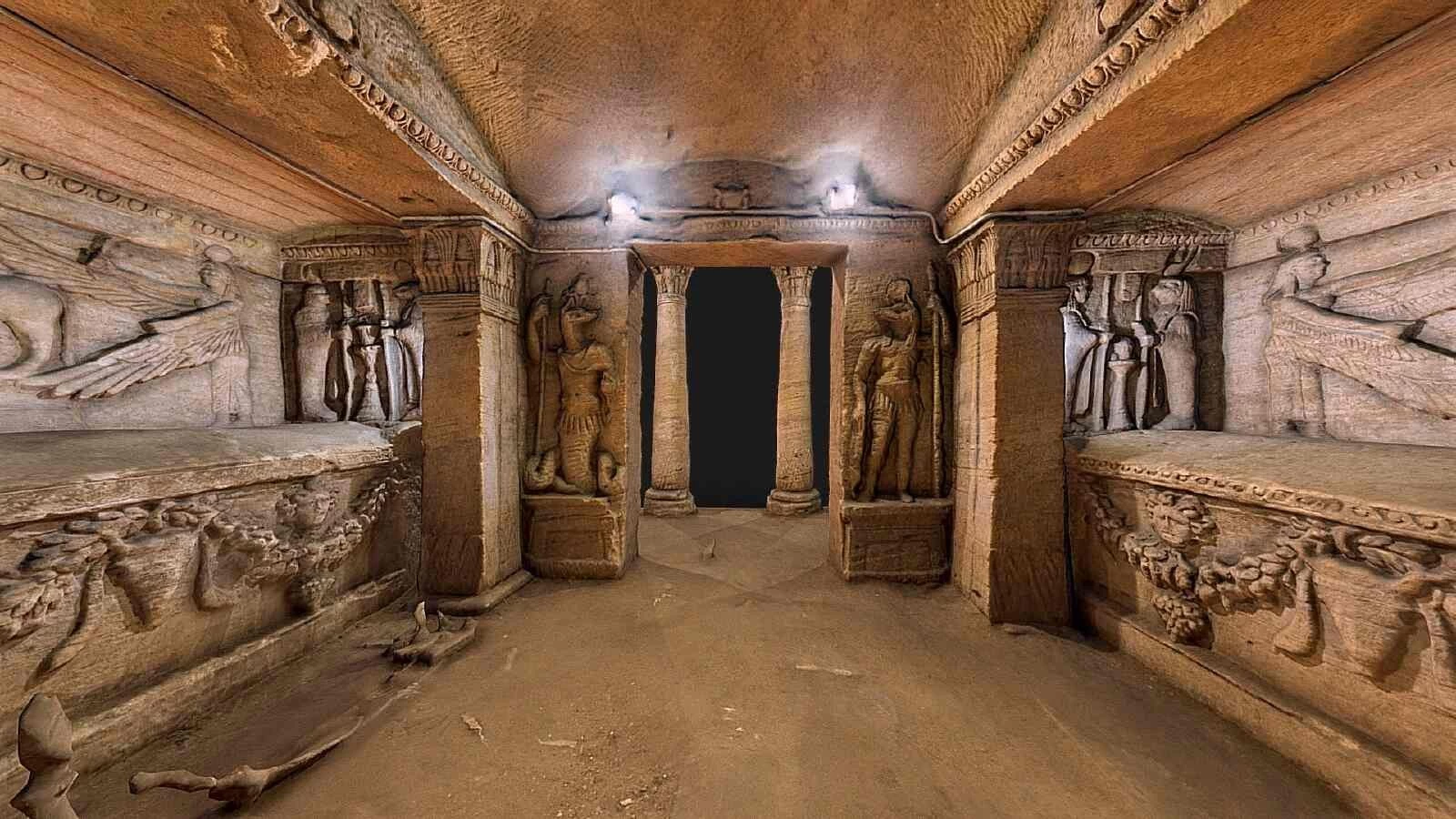
What is Kom El Shoqafa?
Kom El Shoqafa is an archaeological site and ancient cemetery in Alexandria, Egypt. The most famous element is the Roman catacombs located within it, which are considered one of the Seven Wonders of the Middle Ages. They were used around the 2nd century AD and are a blend of Egyptian, Greek, and Roman cultures, reflecting the multicultural nature of Alexandria. It is essential to visit it on your egypt day tour
The rock-cut catacombs are an underground system of burial tombs carved out of rock. They house a combination of Egyptian-type paintings, Roman statues, and Greek inscriptions, reflecting the cultural melting pot in this old city. The Hall of the Fathers is the most visited feature of Kom el Shoqafa, where dead bodies of rich families were placed in niches.
Apart from the catacombs, the complex contains other monuments such as a magnificent staircase, tombs' rooms, and a miniature theater. Kom el Shoqafa is a significant historical and archaeological place that provides insight into the religious and cultural existence of ancient Alexandrians.
why was the catacombs of kom el shoqafa built
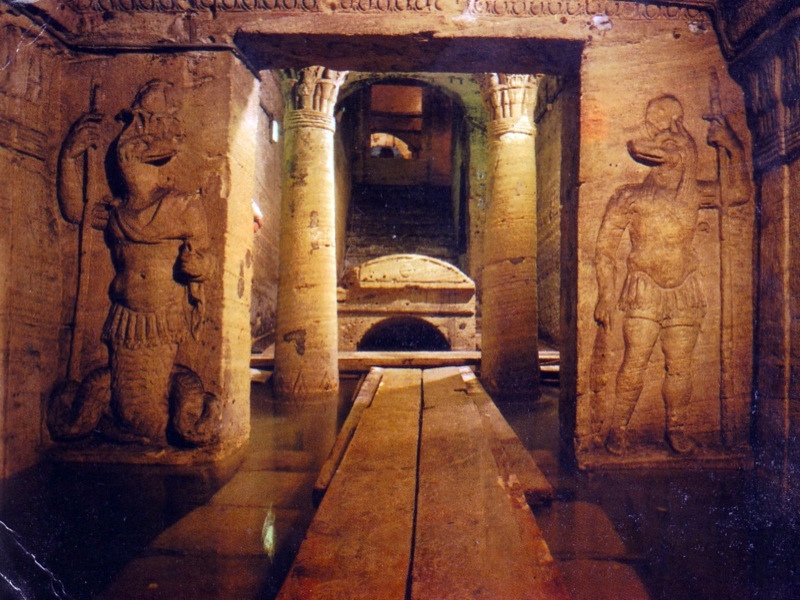
The catacombs of Kom el Shoqafa were built as a necropolis in which the wealthy residents of Alexandria would be buried during Roman times, AD 2nd century. Catacombs were employed as a necropolis for burials where the family would inter their dead in a safe and respectful manner. The site represents religious beliefs and practices at the period in which Egyptian, Greek, and Roman cultures blended.
There are some reasons why the catacombs were constructed:
Cultural Blending: Alexandria was a cosmopolitan city, and Egyptian, Greek, and Roman cultures blended together into one. This is evident in the catacombs because Egyptian-type tombs, Greek inscriptions, and Roman forms of artwork can be found throughout the structures and ornamentation. The grounds also gave people space to be buried in a respectful way of local Egyptian practices and Roman and Greek influence.
Religious beliefs: Tombs were constructed from religious beliefs held at the time that death marked a passage into the hereafter. The catacombs served as a sacred place where dead people and families could pray for their ancestors so that they lived peacefully in the hereafter.
Practicality: The fact that Alexandria was not a large space to provide much room for the burials led to the underground tombs like the catacombs as being a practical solution. The catacombs were excavated in rock and utilized the available limited space as well as provide protection to the dead from plundering and weather.
Wealth and Status: The classy catacombs, their refined design and sumptuous ornamentation, also provided a vehicle to enhance the status of affluent families. The tombs were adorned with sculptures, frescoes, and inscriptions to signify the social and economic standing of the deceased.
Tourist Guide to Visiting Kom El Shoqafa in Alexandria
Kom El Shoqafa is the most historical place in Alexandria, and it is essential to discover it on your egypt tours . The site is home to ancient Roman-era catacombs, which include Egyptian, Greek, and Roman architecture and cultures. Here is a useful guide to ensure your visit is enjoyable and informative:
1. Where Kom el Shoqafa Is and How to Get There
Address: Kom El Shoqafa, Alexandria, Egypt
Working Hours: The place is generally open 9:00 AM to 5:00 PM daily.
Best Time to Visit: Better time to visit in winter in October and April to miss summer heat. Better time to visit early morning or late afternoon to miss people.
2. Entry Fees
Entrance Fee: It's approximately £60-80 (subject to revision), with some photography or video charge.
Discounts: Student and Egyptian national discounts are generally available.
3. What to See
Catacombs: The site's most striking feature is the underground burial system. The catacombs are several levels beneath the surface, and the most famous are the Hall of the Fathers and the banquet hall. The tombs contain a combination of Egyptian, Greek, and Roman symbols and paintings, including statues, carvings, and frescoes.
Roman and Egyptian Influence: You’ll notice the fusion of Egyptian and Roman styles throughout the site. Roman-style tombs are mixed with Egyptian iconography, such as the falcon (representing Horus) and winged sun disks. Some tombs feature Greek inscriptions in the Greek alphabet.
The Alexandria Necropolis: The necropolis contains a collection of rooms that possess ceilings and walls with exquisite, painted sculpture and murals, all with the expectation of demonstrating honor to the deceased as well as transporting them safely to the afterlife.
4. Site Highlights
The Main Entrance: The entrance to the catacombs is through a monumental staircase to the room below.
The Hall of the Fathers: A vast, domed chamber where the most significant families were entombed. Locate the combination of Egyptian-style frescos and Roman sculpture.
The Banquet Hall: A chamber containing a distinctive painting of a banquet, a popular burial theme during this period.
Roman Tombs: The tombs are cut out of the wall, with niches to place the bodies and stone reliefs of the deceased and their kin.
5. Other Area Attractions
While in the area, visit these neighborhood sites:
Pompey's Pillar: Colossal Roman triumphal pillar.
The Alexandria National Museum is a museum that contains collections of ancient Egyptian, Greek, and Roman periods.
The Bibliotheca Alexandrina: Modern library in memory of the ancient Library of Alexandria.
Qaitbay Citadel: The ancient citadel constructed on the site of the old Lighthouse of Alexandria.
6. Visiting Tips
Good Shoes: Good walking shoes are a must for the steep, narrow steps and walkways of the site.
Stay Hydrated: It's hot, particularly in the summer, so take water.
Guides and Audio Guides: Take a local guide to have an even more enriched experience, or an audio guide (if available) for additional information about the history and significance of the catacombs.
Photography is allowed, but ask if there are any regulations, i.e., charges for using professional cameras.
Respect the Site: Since it is an archaeological site and a sacred site, always be respectful to the site and the past.
7. Travel Tips
Transport: The place of destination is in Alexandria, and as you are likely to be based in Cairo, it is advisable to travel by train (2.5–3 hours), private car, or bus. Taxis and ride-hailing services like Uber and Careem are also readily accessible in Alexandria.
Amenities Around: Egyptian food and beverages are found around Alexandria at restaurants and cafes. It is advisable to eat before or after visiting the catacombs because there are no eating halls within the catacombs.
How to Visit Kom El Shoqafa in Alexandria?
How to Go to Kom El Shoqafa in Alexandria
Going to Kom El Shoqafa is another adventure that will have you visit an ancient necropolis rich in history and culture. This is how to plan and go:
Getting There
Location:
Kom El Shoqafa is located in the central city of Alexandria, Egypt.
By Car or Taxi:
It is possible to go using a taxi or ride-sharing service (Uber or Careem) straight to the site.
If you are in Alexandria, it is about a 15-20 minute drive from Alexandria Corniche or from the central train station.
By Public Transport:
You travel by microbus or bus there. A taxi or ride, however, is recommended if you have not been there before, as it is easier.
Admission and Tickets
Opening Hours:
The location is usually open between 9:00 AM and 5:00 PM; make sure to call ahead of time for any changed hours or holidays.
Ticket Price:
Admission prices will typically cost anywhere between £60 and £80 for international visitors.
Students or Egyptian citizens should be able to obtain a discount.
You can have another fee added for filming or taking photos.
What to Expect When You Arrive
Entrance:
The catacombs are accessed through a large staircase leading underground, so be prepared for a bit of walking.
What You’ll See:
Explore the underground chambers, featuring a combination of Roman, Greek, and Egyptian styles in the tombs, artwork, and frescoes.
The site includes the famous Hall of the Fathers, banquet halls, and the Roman tombs with intricate carvings.
Keep an eye out for Greek inscriptions, Egyptian symbols, and Roman statues throughout.
Have a Guide
Local Guides: While it is possible for you to tour the site by yourself, it is highly recommended that you engage a local guide to enlighten you on the historical significance of the site.
Audio Guides: Audio guides are in some sites as an additional optional feature for your tour.
Visiting Tips
Wear Comfortable Shoes: Since the catacombs involve going up and down steep, rugged stairs, you will require comfortable shoes.
Stay Hydrated: Although Alexandria does heat up, especially in the summer, make sure to bring water with you.
Be Respectful of the Site: With its history and religious significance, respect and knowledge are most important when visiting.
Attractions Near
After visiting Kom El Shoqafa, consider other attractions near visiting:
-Pompey's Pillar: An enormous Roman pillar in Alexandria.
-The Alexandria National Museum gives more history of the area and artifacts from it.
Qaitbay Citadel - a lovely fortress constructed where the ancient Lighthouse of Alexandria stood.
Best Time to Visit
Winter (October to April): Winter is the best time to visit, avoiding the hot summer sun. Early morning or late afternoon for a less crowded experience.
facts about Kom El Shoqafa
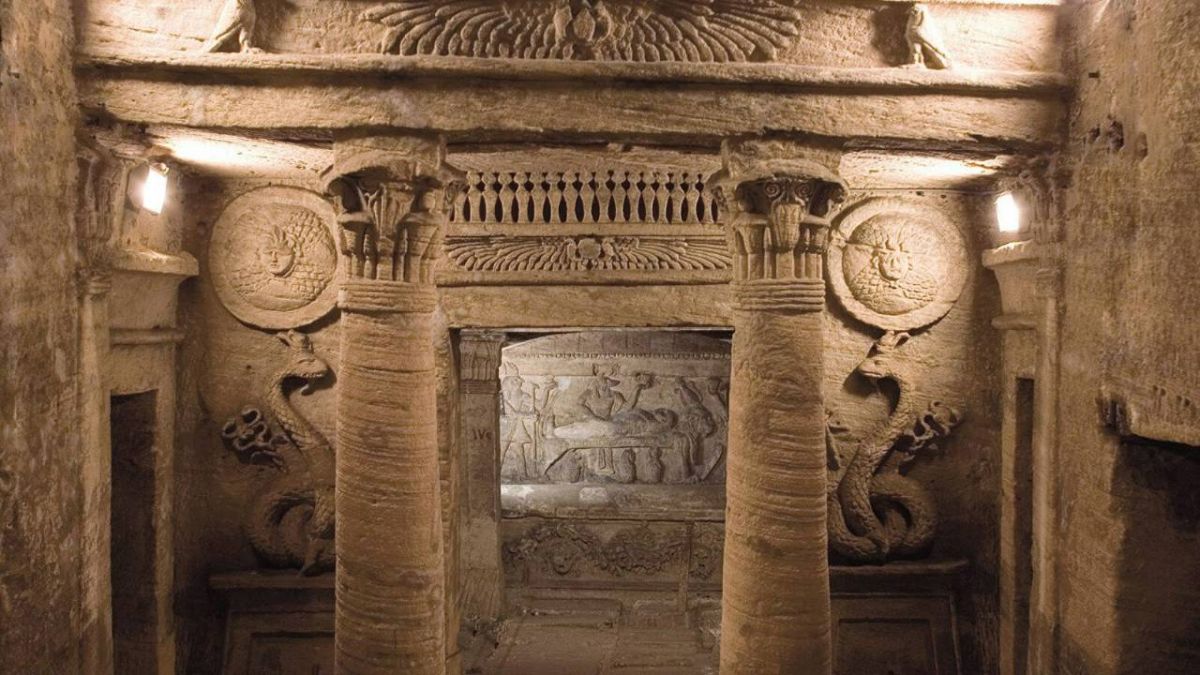
Following are some interesting facts about Kom El Shoqafa:
Roman-Egyptian Synthesis: Kom El Shoqafa is an ancient burial ground which combines Roman, Egyptian, and Greek styles of architecture and artwork, a representation of syncretism in Alexandria during the Roman rule.
Catacombs: The most famous aspect of the site are the catacombs, which were a 2nd to 4th-century AD necropolis. There are three levels of catacombs, the second being the Hall of the Fathers.
The Seven Wonders of the Middle Ages: Kom El Shoqafa was one of the Seven Wonders of the Medieval World because it was historically significant and unusual.
Spontaneous Discovery: The necropolis was discovered by chance in 1900 when a donkey strayed into a tomb, and the archaeologists began excavating the large burial complex underneath.
Egyptian God Symbols: Egyptian gods such as Horus (bird form) and sun disk with wings are seen in the catacombs, showing how Egyptian religious symbols were used in Roman funeral rites.
Decorations and Tomb Art: Frescoes, carvings, and sculpture of the catacombs include many depicting the dead at a feast or in the afterlife and also Roman and Egyptian gods.
Architectural Aspects: Tombs were carved out of solid rock, and tables where meals were eaten and niches to lay corpses of the deceased appear in certain tombs, as both Egyptian and Roman burial practices shaped the design.
Greek Inscriptions: Greek inscriptions line the catacombs' walls, reflecting the presence of a Greek-speaking community in Alexandria, which attests to the multiculturalism of the region.
Funerary Practices: The cemetery was a necropolis, with the dead being positioned in burial niches and provided with gifts, according to Egyptian as well as Roman funerary customs, to ensure safe passage to the afterlife.
Banquet Hall: Of all the rooms, the Banquet Hall is the most intriguing, decorated with a painting of a banquet on which the deceased are feasting in the afterlife in the other world, said to allow them to be led into that other world.
catacombs of kom el shoqafa tickets
As of the latest update, the entry fee to the Catacombs of Kom El Shoqafa in Alexandria is about:
International visitors: E£ 80-100 (about $3-5 USD).
Egyptian students and nationals: Usually E£ 20-30 (subject to change).
Extra fees are payable for:
Photography: There is an extra fee in certain areas for photography or the use of professional cameras.
It is always a good idea to check the latest prices or inquire from a local guide for the updated ticket price so that prices don't get inflated with the passage of time.
